How to Fertilize Maple Trees: A Step-by-Step Guide for Lush Foliage
- February 21, 2024
- 0 comment
Discover the secrets to lush maple foliage with our step-by-step fertilization guide. Maximize growth and health easily. If you’re looking to improve the health and appearance of your maple trees, this guide is for you. It provides a clear, step-by-step approach to fertilizing maple trees, ensuring they receive the right nutrients for optimal growth and foliage. This article is designed for anyone from beginners to experienced gardeners, offering practical advice to help your maple trees flourish. Follow our tips to achieve vibrant leaves and a robust tree with minimal effort.
List of Guides on How to Fertilize Maple Trees
- Soil Testing
- Choosing Your Fertilizer
- Application Techniques
- Watering After Application
- Monitoring and Maintenance
Understanding Maple Trees
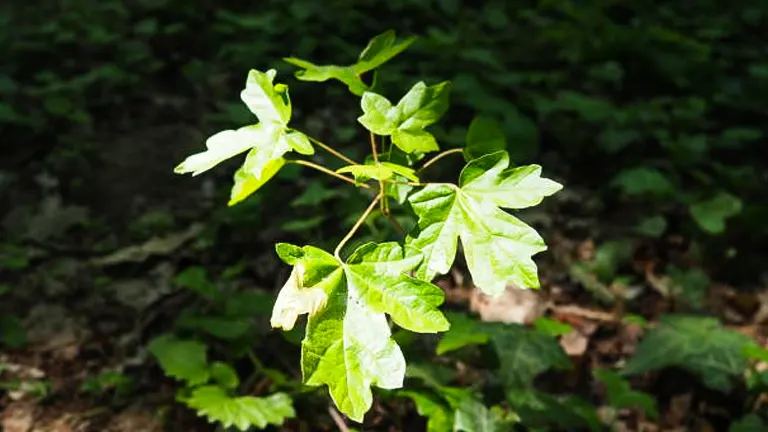
Maple trees, known for their stunning fall foliage and the valuable sap some species produce, have diverse needs based on their variety. The most common types found in gardens and landscapes include the Sugar Maple, Red Maple, and Japanese Maple, each requiring slightly different care approaches. Central to all maple tree care is understanding the soil they thrive in—well-drained, slightly acidic to neutral soil is ideal.
The Role of Soil Health
Soil health is the cornerstone of vibrant maple tree growth. It encompasses a spectrum of factors, including nutrient availability, moisture retention, and the presence of beneficial microorganisms. A well-structured soil with ample organic matter encourages the proliferation of a diverse microbial ecosystem, enhancing nutrient cycling and availability. These microorganisms play a pivotal role in decomposing organic matter, thereby releasing nutrients in forms accessible to the trees’ roots.
Soil Preferences and Nutrient Dynamics
Maple trees flourish in well-drained, loamy soils with a slight acidity to neutral pH, typically ranging from 5.5 to 7.5. This pH range optimizes nutrient availability, particularly for essential elements such as nitrogen (N), phosphorus (P), and potassium (K), which are critical for the trees’ metabolic processes and overall health.
Optimal Soil Conditions for Maple Trees
| Soil Parameter | Ideal Range/Condition | Scientific Importance | Notes |
|---|---|---|---|
| pH Range | 5.5 to 7.5 | Affects nutrient ion availability and microbial activity | Maple trees thrive in slightly acidic to neutral pH, optimizing the solubility of essential nutrients such as N, P, K, while minimizing the risk of metal toxicity. |
| Texture | Loamy | Ensures proper drainage and aeration, critical for root health | Loamy soil, with its balance of sand, silt, and clay, offers an ideal structure for oxygen and water movement, crucial for root respiration and nutrient uptake. |
| Organic Matter Content | 4% to 6% by weight | Enhances soil structure, water retention, and nutrient availability | High organic matter improves cation exchange capacity (CEC), boosting the soil’s ability to retain essential nutrients and making them readily available for root absorption. |
| Nutrient Availability | Balanced N-P-K (e.g., 10-10-10 ratio) | Essential for growth, root development, and stress resistance | The availability of nitrogen, phosphorus, and potassium at balanced levels supports photosynthesis, energy transfer, and overall tree health, respectively. Each plays a unique role in cellular processes and tree physiology. |
| Moisture Content | 25% to 35% field capacity | Balances water availability with adequate aeration | Moisture levels within this range prevent root rot while ensuring sufficient water for physiological processes. Overly wet or dry conditions can stress the tree, affecting growth and foliage health. |
| Oxygen Diffusion Rate (ODR) | >0.2 mg O2 m^-2 s^-1 | Indicates adequate soil aeration for root respiration | Adequate ODR is critical for root function and nutrient uptake. Compacted soils with low ODR can lead to anaerobic conditions, detrimental to maple tree health. |
| Microbial Activity | High diversity and activity | Promotes nutrient cycling and disease suppression | A diverse microbial community enhances the breakdown of organic matter and nutrient mineralization, making nutrients more accessible to the tree. Additionally, certain microbes can protect roots from pathogens. |
The table provided offers a comprehensive overview of the ideal soil conditions necessary for the optimal growth of maple trees, emphasizing the importance of soil pH, texture, organic matter content, and balanced nutrient availability (N-P-K). It serves as a critical educational resource, highlighting the scientific basis behind each soil characteristic and its impact on the health and development of maple trees. By understanding these key factors, gardeners and arborists can better tailor their care practices to meet the specific needs of maple trees, ensuring their vigorous growth and the production of lush foliage.
The Importance of Fertilization
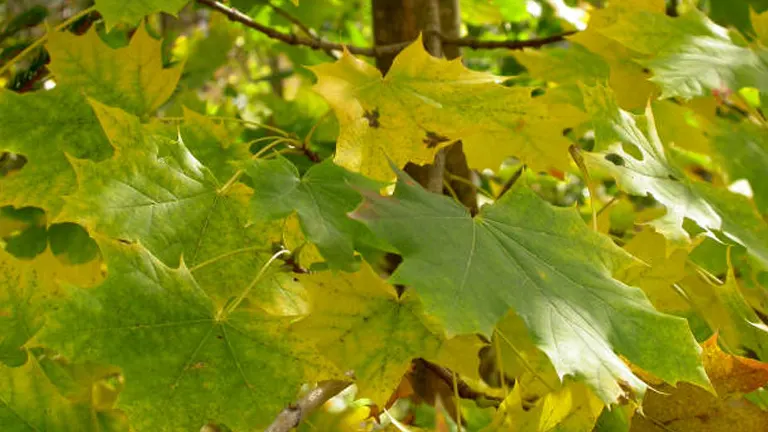
Fertilization is essential for the sustained health and vigor of maple trees. It addresses soil nutrient deficiencies, providing the trees with the vital elements they need to thrive. Essential nutrients for maple trees include:
- Nitrogen (N): Encourages lush leaf growth and vibrant green color.
- Phosphorus (P): Supports strong root development and aids in energy transfer.
- Potassium (K): Promotes overall health, improves drought resistance, and helps in disease prevention.
A lack of these nutrients can manifest in several ways, such as stunted growth, poor leaf coloration, and a general decline in tree vigor. Conversely, excessive fertilization can harm the tree through nutrient burn, characterized by root damage and leaf scorch, which in severe cases, may lead to the tree’s death.
To avoid these issues, it’s crucial to apply a balanced approach to fertilization, considering both the specific needs of the tree and the existing soil conditions.
Best Time to Fertilize Maple Trees
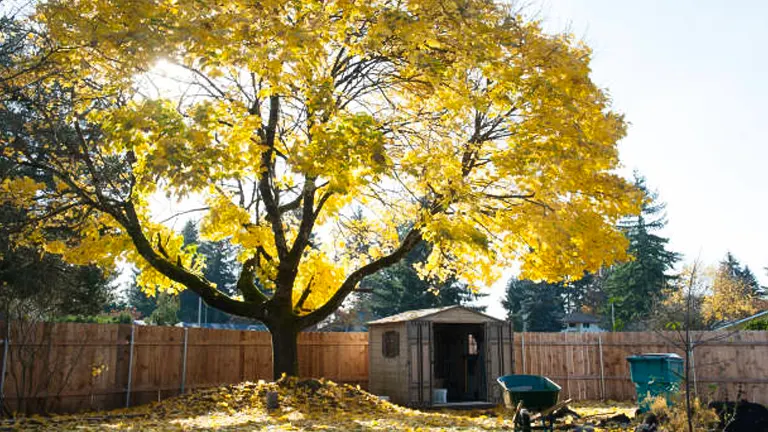
The timing of fertilizer application is crucial to maximize the health benefits for maple trees while minimizing potential risks. Maple trees, like many deciduous species, have specific growth cycles that make certain times of the year better for fertilization. Understanding these cycles helps ensure that the trees utilize nutrients effectively for growth and maintenance, without the wastage or harm that incorrect timing could cause.
Early Spring Fertilization
Why Early Spring? As maple trees exit their winter dormancy and prepare for new growth, their nutrient uptake mechanisms become more active. Fertilizing in early spring, just before the start of the growth season, provides the trees with essential nutrients right when they need them the most. This boosts leaf and branch development, ensuring a strong start to the season.
What to Consider: Aim to fertilize before bud break, when the soil is thawed and can absorb the fertilizer. The exact timing can vary based on your local climate, but it typically falls between late February and early April in many regions.
Late Fall Fertilization
Why Late Fall? Fertilizing in late fall, after the leaves have fallen but before the ground freezes, supports root development and helps the tree store nutrients for the winter. This timing is critical because it supplies the tree with the resources needed to survive the winter and thrive in the following spring.
What to Consider: The goal is to apply fertilizer when the tree is no longer actively growing above ground but can still absorb nutrients through its roots. In many areas, this period occurs from late October to early December. It’s important to ensure the fertilizer is applied early enough so that it can be absorbed before the soil freezes.
Environmental Considerations
- Soil Temperature: For optimal nutrient uptake, soil temperature should be above freezing but cool enough to discourage new top growth. Soil temperatures of 40-55°F (4-13°C) are ideal.
- Weather Patterns: Avoid fertilizing right before heavy rains that can wash away the nutrients. Similarly, during drought conditions, ensure adequate watering to facilitate nutrient absorption.
- Regional Climate: Adjust the timing based on your specific climate zone. Cooler northern regions may require earlier fall fertilization, while warmer southern areas might extend the fertilization window.
Choosing the Right Fertilizer
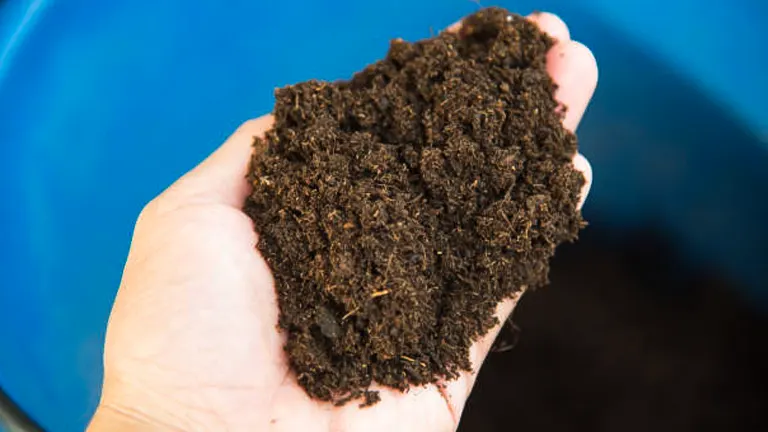
Selecting the appropriate fertilizer is crucial for the health of your maple trees. Fertilizers are not one-size-fits-all; they come in various formulations tailored to different needs. The key is understanding the N-P-K ratio—nitrogen (N), phosphorus (P), and potassium (K)—which represents the proportion of these vital nutrients.
Organic vs. Synthetic Fertilizers
Organic fertilizers are derived from natural sources and release nutrients slowly, reducing the risk of over-fertilization. They also improve soil structure and health over time. Synthetic fertilizers, on the other hand, provide a quick release of nutrients and can be more precisely formulated to meet specific nutritional needs. However, they don’t offer the soil health benefits of organic options.
Organic vs. Synthetic Fertilizers: A Comparative Analysis
| Aspect | Organic Fertilizers | Synthetic Fertilizers |
|---|---|---|
| Nutrient Release | Slow and dependent on soil conditions, offering a steady supply of nutrients. | Immediate, providing quick nutrient availability. |
| Soil Health | Improves soil structure, increases microbial activity, and enhances water retention. | May lead to soil compaction and decrease in microbial diversity over time. |
| Environmental Impact | Low risk of leaching and pollution, supports sustainable practices. | Higher risk of nutrient runoff, contributing to water pollution. |
| Nutrient Content | Generally lower nutrient concentrations, variability in N-P-K ratios. | High precision in nutrient content, offering specific N-P-K ratios. |
| Long-term Benefits | Enhances soil fertility over time, promoting healthier plant growth. | Primarily boosts plant growth without improving soil fertility. |
Customizing Fertilization for Maple Trees
Maple trees thrive with a balanced approach to fertilization, tailored to their growth phase and soil conditions. A balanced 10-10-10 N-P-K ratio is a general recommendation, yet optimal fertilization strategies consider:
- Soil Testing: Before fertilizing, conduct a soil test to determine existing nutrient levels and pH. Maple trees prefer slightly acidic to neutral pH levels (5.5 to 7.5), and soil testing can guide the adjustment of fertilizer types and ratios.
- Seasonal Needs: Younger trees or those recently planted may benefit from higher nitrogen levels to promote growth. Mature trees, especially those established in well-maintained landscapes, might require less frequent fertilization, with a focus on maintaining health and vigor.
- Environmental Factors: Consider local climate, soil type, and water availability. In areas with heavy rainfall, nutrient leaching can be a concern, necessitating more frequent but lower-dose fertilization applications.
Step-by-Step Guide to Fertilizing Maple Trees
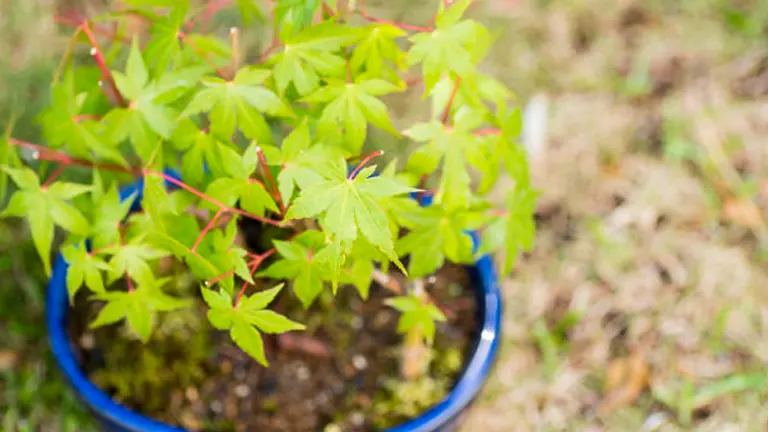
Fertilizing your maple trees effectively involves several key steps, from testing the soil to applying the fertilizer properly.
1. Soil Testing
- Why It’s Important: Soil testing reveals the nutrient composition and pH level of your soil, essential for selecting the right fertilizer. Maple trees thrive in slightly acidic to neutral pH (5.5 to 7.5).
- How to Do It: Collect soil samples from around the tree, at a depth of 6-8 inches. You can use a home testing kit or send samples to a local extension service for a more comprehensive analysis.
2. Choosing Your Fertilizer
- Understanding N-P-K: Select a fertilizer based on your soil test results. A balanced N-P-K ratio (e.g., 10-10-10) is often recommended, but your tree’s specific needs may vary.
- Organic vs. Synthetic: Consider organic fertilizers for slow-release nutrients and soil health benefits or synthetic fertilizers for targeted and immediate nutrient supply.
3. Application Techniques
- Broadcasting Method: Spread granular fertilizer evenly around the drip line, not near the trunk, to encourage root growth outward and prevent root burn.
- Best Practices: Apply fertilizer on a calm day to prevent wind from dispersing the granules. Use a spreader for an even distribution if available.
4. Watering After Application
- Why It Matters: Water dissolves fertilizer, making nutrients available to the tree’s roots. It also prevents fertilizer burn by diluting nutrient concentrations.
- How Much to Water: Irrigate the fertilized area thoroughly but avoid over-watering. Aim for the soil to be moist to a depth of 6 inches.
5. Monitoring and Maintenance
- Observation: Look for signs of improvement in growth and foliage. Note any adverse reactions, such as leaf burn or discoloration, which could indicate over-fertilization.
- Adjustments: If the tree’s response is not as expected, adjust the fertilizer type, amount, or frequency based on ongoing observations and possibly further soil testing.
Additional Tips for Success
- Timing: The best times to fertilize are early spring before bud break and late fall after leaf drop. These periods align with the tree’s natural growth cycles.
- Frequency: Generally, annual fertilization is sufficient. However, newly planted or young trees might benefit from a lighter, more frequent schedule during their first few growing seasons.
- Environmental Consideration: Be mindful of local weather patterns and water availability. Drought conditions require additional watering to support nutrient uptake.
Common Mistakes to Avoid in Fertilizing Maple Trees
Proper fertilization is key to maintaining healthy maple trees, but there are common pitfalls that can hinder their growth and health. Being aware of these can help you avoid unnecessary harm to your trees.
Over-Fertilization
- Understanding the Impact: Excessive application of fertilizer not only risks nutrient burn, characterized by root damage and leaf discoloration but can also lead to an imbalance in soil microbe activity and water absorption issues. It’s essential to balance nutrient supply with the tree’s actual requirements.
- Precision in Application: Adhere strictly to the guidelines suggested by soil test results and fertilizer instructions. Utilize a scale or measuring tool for accuracy, especially when dealing with granular products.
Choosing an Incompatible Fertilizer
- Soil and Tree Needs Alignment: Fertilizers come in various formulations, each designed to meet specific nutritional needs. For example, young maple trees might benefit more from higher nitrogen content to support their growth, whereas mature trees might need a formula lower in nitrogen but higher in potassium for stress resistance.
- Specialized Formulations: Consider specialized tree fertilizers that are designed for the needs of deciduous trees like maples. These products often contain micronutrients, such as magnesium and iron, that are beneficial for maple trees and might not be present in general-purpose fertilizers.
Incorrect Application Methods
- Drip Line Focus: Fertilizing within the drip line, rather than close to the trunk, supports the natural growth pattern of the roots and ensures that the nutrients are placed where they can be most effectively absorbed.
- Layering and Watering: For granular fertilizers, lightly raking them into the top layer of soil can prevent runoff and aid in absorption. Follow up with sufficient watering to help move the nutrients into the soil profile without causing erosion or runoff.
Additional Considerations for Maple Tree Fertilization
- Seasonal Timing: Avoid fertilizing late in the growing season as it can stimulate new growth that may not harden off before winter, making the tree vulnerable to frost damage.
- Environmental Awareness: Be mindful of the surrounding environment when fertilizing. Runoff from over-fertilization can affect nearby water bodies, contributing to algae blooms and water quality issues. Using organic fertilizers or slow-release formulas can mitigate some of these environmental impacts.
Conclusion
Fertilizing maple trees is an essential aspect of their care, contributing significantly to their growth, health, and the vibrancy of their foliage. By understanding the specific needs of your maple trees, choosing the right fertilizer, and applying it correctly, you can ensure your trees remain a stunning part of your landscape for years to come. Remember to avoid common mistakes and adjust your care practices based on the tree’s response and soil conditions. With patience and proper care, your maple trees will thrive, adding beauty and shade to your outdoor space.
FAQs
- Can leaf color indicate the type of fertilizer my maple tree needs?
Yes, leaf color can be a clue. For instance, yellowing leaves might indicate a nitrogen deficiency, suggesting the need for a higher-nitrogen fertilizer. Conversely, if the foliage is dark green but the growth is poor, the tree might be getting too much nitrogen and not enough phosphorus or potassium. - How does the age of my maple tree affect its fertilization needs?
Younger trees benefit from fertilizers that support root and shoot growth, often requiring more nitrogen. Mature trees, however, may need less nitrogen and more phosphorus and potassium to support their overall health and stress resistance, especially if they’re well-established with less vigorous growth. - Is there a difference in fertilizing potted maple trees compared to those planted in the ground?
Yes, potted maple trees often require more frequent but lighter fertilization due to limited soil resources and faster depletion of nutrients in pots. Use a balanced, water-soluble fertilizer diluted to half strength every 4-6 weeks during the growing season. - Should I adjust fertilization based on the maple tree species?
Different maple species can have varying nutrient requirements. For example, Japanese maples prefer a more gentle approach with less frequent and lower-concentration fertilizer compared to sugar maples, which can handle and benefit from more robust fertilization practices. - Can the local wildlife impact how I fertilize my maple trees?
Yes, if your area has a high population of certain wildlife, like deer, excessive use of certain organic fertilizers might attract them to your trees, potentially causing damage. In such cases, opting for less aromatic synthetic fertilizers could be more prudent. - When to Fertilize a Maple Tree
The best time to fertilize a maple tree is in early spring, just before new growth starts. This timing ensures that the tree receives nutrients when it needs them the most for healthy foliage and root development. - Can You Fertilize a Maple Tree?
Yes, you can fertilize a maple tree to enhance its growth and health. Use a balanced, slow-release fertilizer to provide essential nutrients, and apply it around the tree’s drip line for optimal absorption. - How Do You Fertilize a Japanese Maple Tree?
To fertilize a Japanese maple tree, use a slow-release, balanced fertilizer in early spring. Apply it around the drip line of the tree and avoid getting too close to the trunk to prevent root damage. Water thoroughly after application.
In summary, proper fertilization is key to nurturing healthy, vibrant maple trees. By following this step-by-step guide, you’ll be well on your way to achieving lush foliage and a thriving tree. Remember, the secret lies in understanding your tree’s specific needs and responding with the right care. Happy gardening!

Benjamin Brooks
Forestry AuthorGreetings! I'm Benjamin Brooks, and my journey over the past 15 years has revolved around the fascinating realms of content creation, expertise in snow clearing, and the intricate world of lumberjacking and landscaping. What began as a simple curiosity about the natural world and heavy machinery has evolved into a passionate profession where my love for crafting words intertwines seamlessly with my lumberjacking and garden skills.

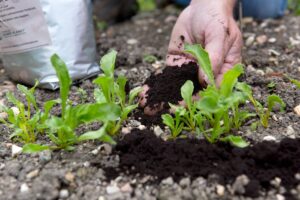


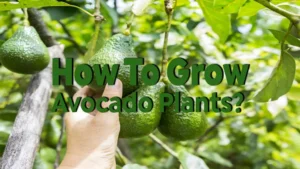








Leave your comment